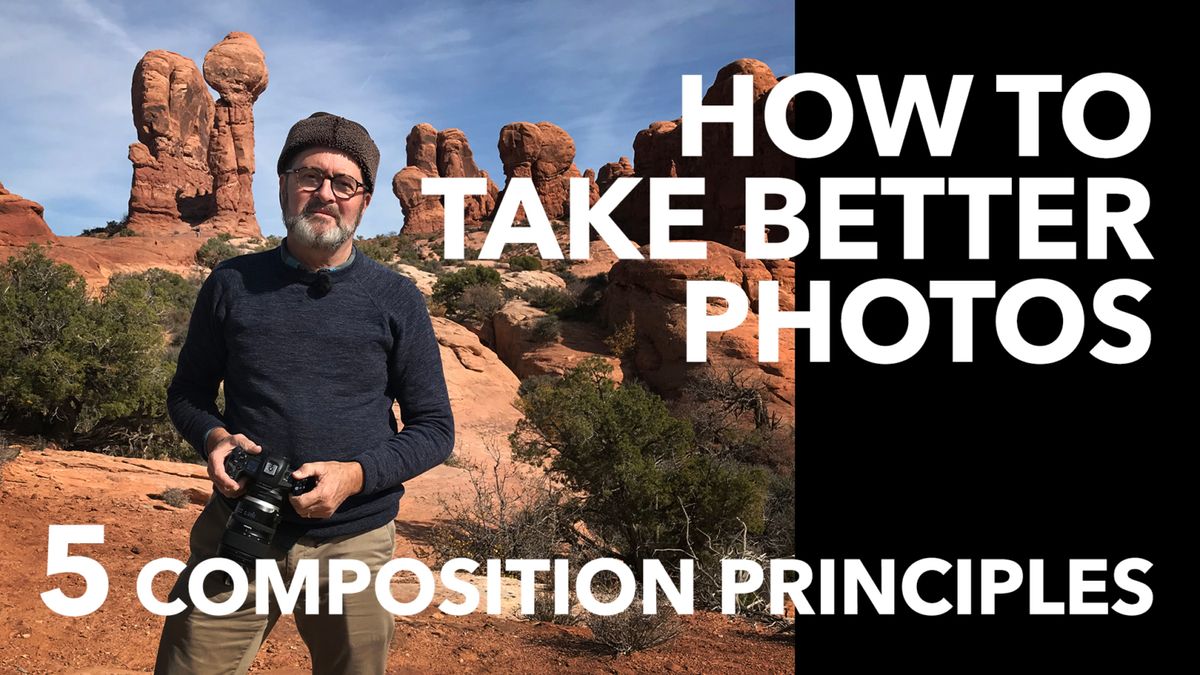In this photography tutorial Jay P teaches you how to take better photos with your camera using 5 composition principles. These 5 basics of design will help you learn to see and identify ways to create better artistic images.
Stop cluttering your images with too much stuff. Composition principles next from The Slanted Lens.
So let’s talk about the five composition principles that every photographer should understand to apply and critique their own work.
- SIMPLICITY is exactly what it says. Simplify your frame. Boil your frame down to three or five strong identifiable elements. Like behind me right now the Red Rock really becomes an element, the blue sky becomes an element and my body becomes an element.
- RULE OF THIRDS. If you divide the frame into thirds horizontally and then divide the frame into thirds vertically, where those lines cross each other become the most dynamic places in the frame.
- BALANCE. If you put an object up in the upper right hand side on the rule of thirds, then you want to balance it in the frame with something on the lower left side of the frame.
- LEADING LINES is a concept that allows you to center punch or put people in the middle.
- FRAMING. The fifth composition principle is framing. You’ve seen framing so many times – a window, a doorway or an arch.
So there’s the five composition principles. Now the reality is, a lot of times great images will apply one, two or three of these composition principles. Maybe even all of them.
So here’s your assignment. Go out and shoot and apply one principle.
Is there a composition principle that you think works most for you? Just leave a comment on our YouTube channel and let’s talk about it. I’d like to see the image. Put it on a Facebook group. Just get out there and shoot and use those composition principles. And keep those cameras rollin’ and keep on clickin’.
See what I can fit in my 2217 SKB case. This bad boy can carry all my Westcott strobe equipment.

